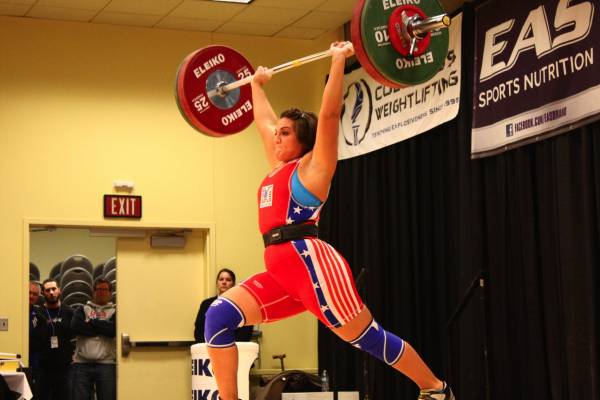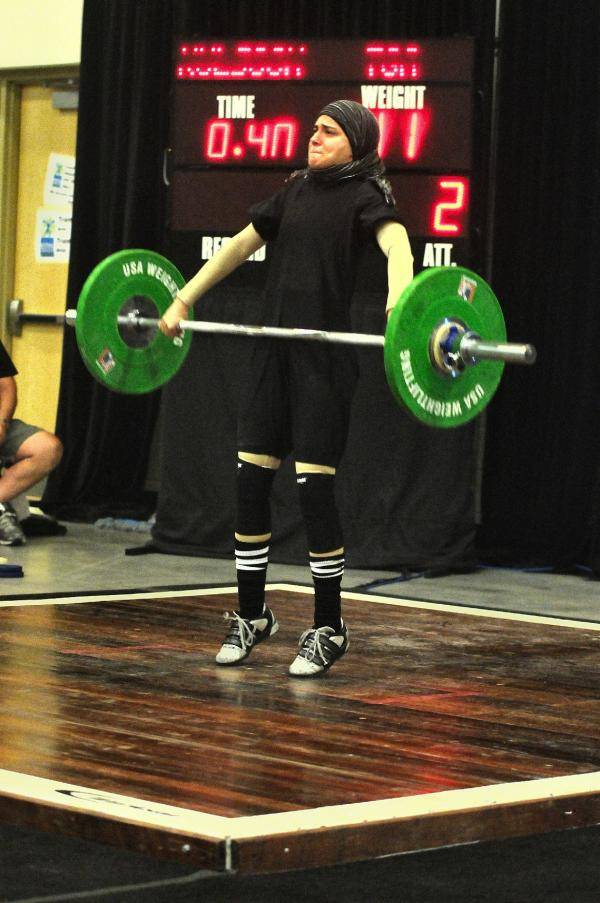In part one of this series we looked at the history of women in the strength sports, specifically up to the 1970s when women started getting involved in Olympic weightlifting. But even between the 70s and now there have been some challenges for female lifters. The end result, however, has been worth all the trials these women pushed through.
Women Hit the Competition Scene
Bodybuilders had their first national meets in 1979 while powerlifting did so in 1977, in Nashua, New Hampshire. Olympic lifting was a bit slower getting off the mark, beginning in 1981. Judy Glenney, wife of top lifter Gary Glenney almost single handedly got the women moving in the United States. Her equivalents in powerlifting were Cindy Reinhoudt and Jan Todd, wives of top supers Don and Terry respectively. The first indication that the IWF was serious about women’s weightlifting was in the 1986 Women’s Tournament in Hungary. The first women’s world championship was held in 1987 in Daytona Beach, Florida. They were held every year afterwards, although women weightlifters had to wait until 2000 for their first Olympics.
In Canada gender equality was pushed by the government and by many other segments of society. Other sports had been invaded so the shock of seeing females in our sport was not a severe as it might have been say twenty or thirty years before. We had our first national championships in the 1987 Canada Cup. By then the only bit of male resistance I heard about was in a power meet in Ontario where officials smugly cited the nude weigh-in rule, figuring that it would scare a certain woman into not entering. Modesty not being her strong suit she called their bluff and the rule was quickly changed.
Jokes were made about women not wanting to give their age and bodyweight to contest officials. This was countered by one woman athlete who agreed this was a problem. She then suggested that women should be allowed to lie about either, as long as they all agreed to lie by the same amount. Then no harm would be done. The 60s would really be 70s and juniors could be as old as 25. We’re not sure if she was joking or not.
When the IWF changed the bodyweight categories in 1997 they created separate ones more suitable for the female height range. Before this they used the same categories as men, just stopping at 82.5+. The ones they settled on still do not please everyone so more changes may occur.
Women Are Different From Men
In the early days there were many fears about women lifters becoming “over-muscled” but for the most part that did not happen. One of the pleasant surprises for coaches was the fact that women are generally far more flexible than men. Teaching the bottom positions was therefore much easier than with men tightened from participation in other sports.
 However, it did become apparent that women do have testosterone, some more than others and those that do have a distinct advantage. Just as important were the psychological requirements. Like the men, some had it, some didn’t. Those with a background in more strenuous and competitive sports had an advantage here.
However, it did become apparent that women do have testosterone, some more than others and those that do have a distinct advantage. Just as important were the psychological requirements. Like the men, some had it, some didn’t. Those with a background in more strenuous and competitive sports had an advantage here.
Many women’s records were set due to the newness of the sport. They still set records but the pace has inevitably slowed as lifting populations leveled off as the sport matured.
Equipment would change also. A women’s bar was introduced, being 25 mm thick instead of 28, 15 kg instead of 20. This seems simplistic in light of future happenings. Gripping strength depends on hand length and ultimately body height, not sex. Since most women are shorter than most men the 25 mm is fine but it may not be needed in the 75 and 75+ categories. Conversely, most men in the lower categories do have some gripping problems due to their small hands. They would welcome a 25 mm bar. But that is difficult due to the limited loads a 25 mm bar can take. Since even some women are lifting over 400 lb today bar thickness will always be a problem for small lifters and big loads.
Also interesting was the evolution of lifting suits after women got involved. Firstly, color and cut got flashier. Some women opted for simple male-style costumes while others wanted to showcase their sex by adding feminine touches. Leg lengths got longer on suits as some wanted more modesty while all wanted to avoid the bar’s knurling scraping their thighs. This development was eventually copied by male lifters as well. Pink lifting belts soon followed (no, not with the men).
Post meet banquets also changed. What used to be a male only affair, complete with sloppy dress now had to accommodate the fairer sex. Some of the ladies opted to copy the casual look of their male teammates while others, perhaps in a fit of gender image overcompensation, went whole hog with heels, hose, fancy hair, and dresses. That in turn prompted more of the male lifters to force themselves into jackets and ties to impress their new teammates.
 As for the Muslim nations female participation was problematic. Lifting is popular in some of these countries but female participation in sports is not tolerated in many. But opportunities for medals were there, and as new emerging forces in the sport world these countries wanted to claim their share. The problem was the over-revealing regulation lifting suits worn by women, which were unsuitable for Muslim women. Finally a solution was found with the ironic help of the U.S. Federation. On behalf of American lifter Kulsoom Abdullah they asked the IWF to approve a full body “unitard” that covered everything including the hair and satisfied religious authorities. This passed, opening the door to Muslim women in future events.
As for the Muslim nations female participation was problematic. Lifting is popular in some of these countries but female participation in sports is not tolerated in many. But opportunities for medals were there, and as new emerging forces in the sport world these countries wanted to claim their share. The problem was the over-revealing regulation lifting suits worn by women, which were unsuitable for Muslim women. Finally a solution was found with the ironic help of the U.S. Federation. On behalf of American lifter Kulsoom Abdullah they asked the IWF to approve a full body “unitard” that covered everything including the hair and satisfied religious authorities. This passed, opening the door to Muslim women in future events.
Competing on the World Level
As for the events themselves, at first there were separate Women’s Worlds. Some wanted completely female championship so that the lower female performances could not be so readily compared with male ones. While appealing to some women this proved unsatisfactory.
At the Pan-Am level Cuba refused to hold the women’s portion on the excuse that they had no women’s program in Cuba. That convinced the IWF that all future Worlds would have to be combined. They did not want women to be shunted off to inferior competitions with inferior officials and coaches. In hindsight this was a wise move for soon female lifters were popular on TV, possibly more so than many of the men. More importantly, ghettoization did not occur and a better all-around show was produced for the public.
At first in the modern age of women’s weightlifting, the Western nations dominated, due to their advanced social conditions and governments that were willing to fund the trips to the Worlds. This would not last long however. Medals were easy to win compared to the men’s worlds. One by one more countries entered the female lifting events. At first the East Bloc nations opined that their women were too busy as wives and mothers to lift. But soon that would change. Bulgaria was the first East Bloc nation to appear. Russia would follow. Then would come China. They would soon come to dominate and have not relinquished their position yet.
Today women’s weightlifting is here to stay. Women’s lifting is not a watered down version of men’s lifting. The 69 kg men’s and the 69 kg women’s categories are two separate events with two separate sets of expectations. Most important, young girls enter the sport without a thought as to its acceptability to them or them to it, and neither do their peers and parents.
To learn more about the history of women in weight sports read part one:






